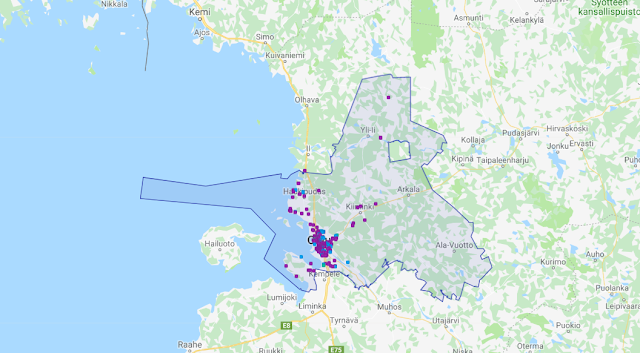Hello!
How’s everyone’s spring going? Here in Rovaniemi we have had
both +18 degrees and a lot of Sun, and now during the past few days we have been getting snow…
Summer is coming, slowly but surely 🌞
As our semester is coming to its end in a few weeks,
today’s post will be our last, but not the least 👀
Within the past few weeks we have had a workshop about email
marketing and we also made a marketing post example for the pop-up we have been
designing.
Let’s see what these are about!
Email Marketing
Have you ever gotten a
newsletter, feedback survey or a welcome email from a web page you signed up
to? If, and when the answer is yes: all of these are types of email marketing.
Some might think that email marketing is dead, but that is
actually not the case. For a decade already, email has been the channel
generating the highest ROI for marketers.
You might also think: “Isn’t social media a better way to
market these days?”. That is also not true, since the statistics say that the engagement rate of the biggest social medias is less than 0.6%, while the average email open rate is 22.86%. Amazing right?
 |
| Email vs. Social Media Engagement (OptinMonster 2019). |
While not going too deep into the world of email
marketing and how to do it, because there is a lot (and when we say a lot, we
mean it) of information about the subject online, we thought that it would be
better to share some links to useful articles and pages to help you to kick off
your email marketing campaign 😊:
Mailchimp
After our teacher’s short lecture about email marketing, we
put our newly acquired information into practice by using Mailchimp.
 |
| Mailchimp Logo (Mailchimp 2019) |
Some of us in this blogging group created a general newsletter
about this marketing course, while the others in the group created emails from different points of view about a survey that was created during another workshop.
Unfortunately, we are unable to share our email examples,
because screenshotting them does not give any good results 🙈 So let's move on to the next topic for this post 😉
Marketing Post Example
Part of our work for the pop-up experience we designed, and wrote about in our previous posts, was to create a draft of a marketing post. Surely, everyone has seen marketing posts scrolling around social media.
So, what is important when creating such a thing?
So, what is important when creating such a thing?
- Do it through the business profile, NOT through your personal one.
- Keep it short, informative and catchy.
- Decide for which kind of customers are you aiming.
- Add visual content, such as a picture or a video.
- Add relevant hashtags (e.g. #Lapland).
- Make it public and easily accessible.
- DO NOT make it insulting in any way.
- DO NOT include anything that is not allowed.
If you are getting afraid of social media marketing, please do not be. It is not as hard as you may think it is, as you can see from the image below.
 |
| Marketing Post Example for the Pop-Up Experience |
This image represents our marketing post example. The post was made only as a draft and so, has not been shared publicly. It includes short story-like text from the Elves' point of view both in English and Finnish, since it is targeted for both Finns and international travelers.
The post also includes some relevant hashtags in the two languages and an image of a reindeer family in their natural habitat.
We planned it for Facebook, since it is aimed mainly at families with children and nowadays many adults and their families are using this social media.
The post also includes some relevant hashtags in the two languages and an image of a reindeer family in their natural habitat.
We planned it for Facebook, since it is aimed mainly at families with children and nowadays many adults and their families are using this social media.
Unfortunately, our pop-up's execution is not possible yet due to copyright issues - which you can read more about in this post - but we will see what the future holds 😉
Thank you all so much for staying with us through this blogging journey in understanding marketing and we hope that you enjoyed our content!
Over and out ✌
---
Thank you all so much for staying with us through this blogging journey in understanding marketing and we hope that you enjoyed our content!
Over and out ✌



